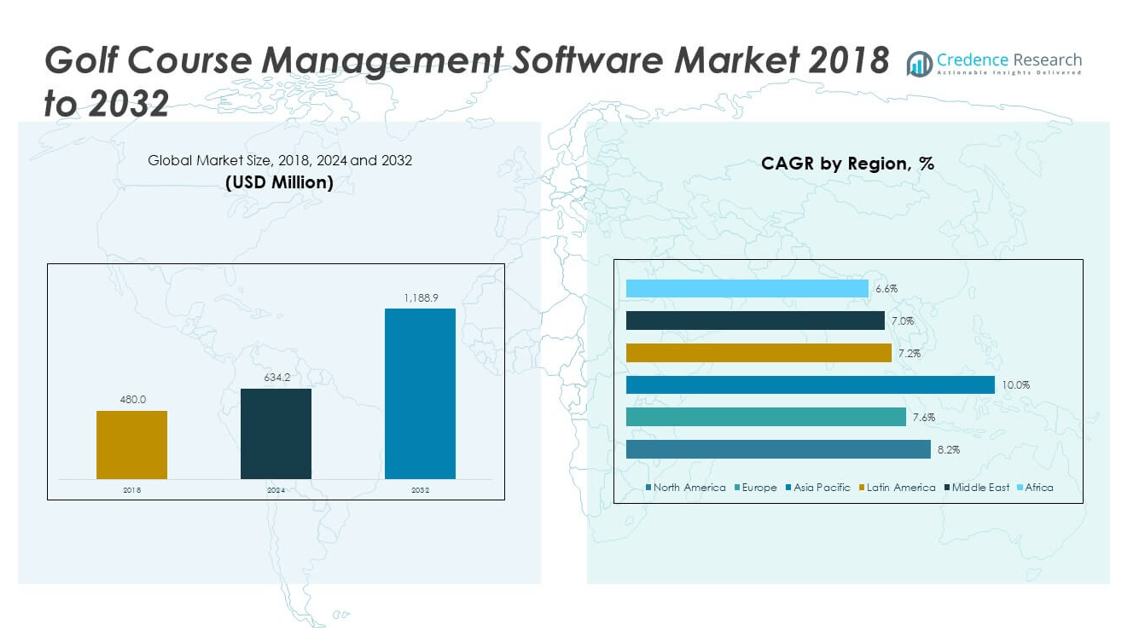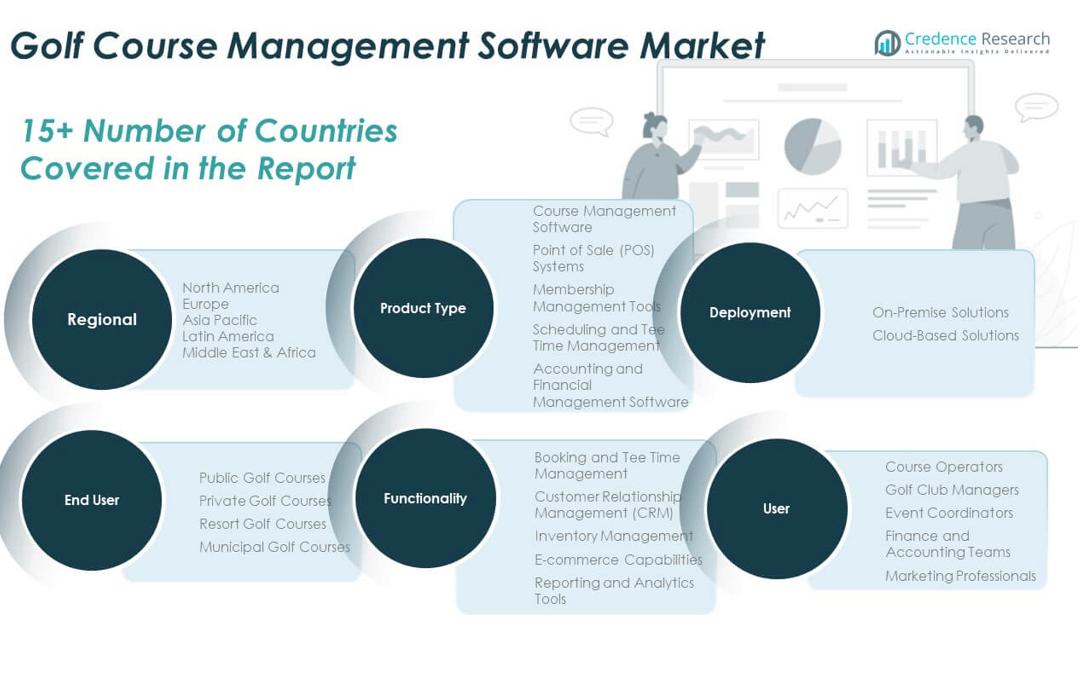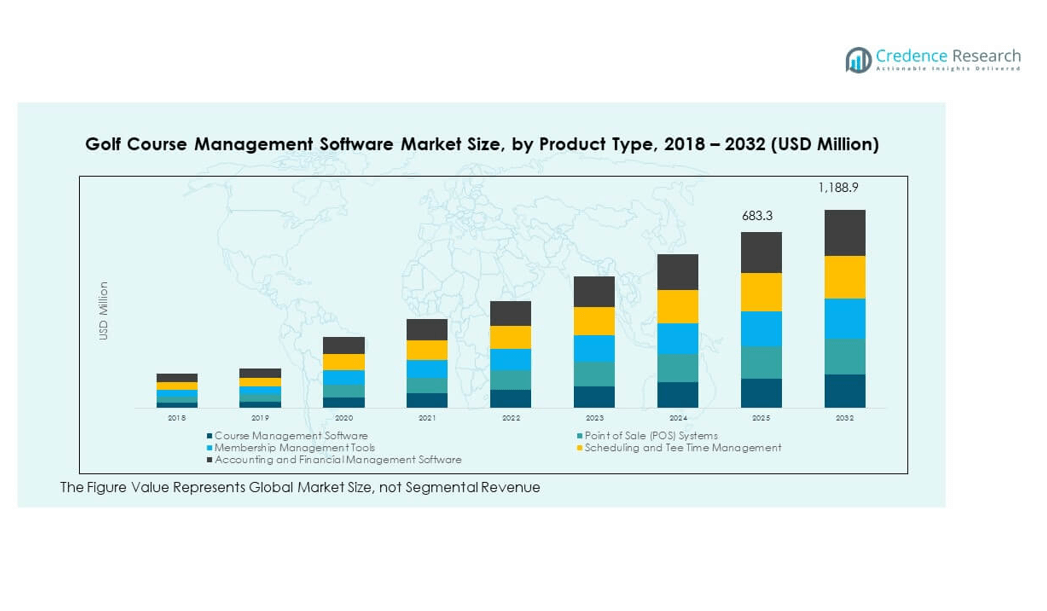CHAPTER NO. 1 : GENESIS OF THE MARKET
1.1 Market Prelude – Introduction & Scope
1.2 The Big Picture – Objectives & Vision
1.3 Strategic Edge – Unique Value Proposition
1.4 Stakeholder Compass – Key Beneficiaries
CHAPTER NO. 2 : EXECUTIVE LENS
2.1 Pulse of the Industry – Market Snapshot
2.2 Growth Arc – Revenue Projections (USD Million)
2.3. Premium Insights – Based on Primary Interviews
CHAPTER NO. 3 : GOLF COURSE MANAGEMENT MARKET FORCES & INDUSTRY PULSE
3.1 Foundations of Change – Market Overview
3.2 Catalysts of Expansion – Key Market Drivers
3.2.1 Momentum Boosters – Growth Triggers
3.2.2 Innovation Fuel – Disruptive Technologies
3.3 Headwinds & Crosswinds – Market Restraints
3.3.1 Regulatory Tides – Compliance Challenges
3.3.2 Economic Frictions – Inflationary Pressures
3.4 Untapped Horizons – Growth Potential & Opportunities
3.5 Strategic Navigation – Industry Frameworks
3.5.1 Market Equilibrium – Porter’s Five Forces
3.5.2 Ecosystem Dynamics – Value Chain Analysis
3.5.3 Macro Forces – PESTEL Breakdown
3.6 Price Trend Analysis
3.6.1 Regional Price Trend
3.6.2 Price Trend by product
CHAPTER NO. 4 : KEY INVESTMENT EPICENTER
4.1 Regional Goldmines – High-Growth Geographies
4.2 Product Frontiers – Lucrative Product Categories
4.3 Deployment Sweet Spots – Emerging Demand Segments
CHAPTER NO. 5: REVENUE TRAJECTORY & WEALTH MAPPING
5.1 Momentum Metrics – Forecast & Growth Curves
5.2 Regional Revenue Footprint – Market Share Insights
5.3 Segmental Wealth Flow – Product Type & Deployment Revenue
CHAPTER NO. 6 : TRADE & COMMERCE ANALYSIS
6.1. Import Analysis by Region
6.1.1. Global Golf Course Management Market Import Revenue By Region
6.2. Export Analysis by Region
6.2.1. Global Golf Course Management Market Export Revenue By Region
CHAPTER NO. 7 : COMPETITION ANALYSIS
7.1. Company Market Share Analysis
7.1.1. Global Golf Course Management Market: Company Market Share
7.2. Global Golf Course Management Market Company Revenue Market Share
7.3. Strategic Developments
7.3.1. Acquisitions & Mergers
7.3.2. New Product Launch
7.3.3. Regional Expansion
7.4. Competitive Dashboard
7.5. Company Assessment Metrics, 2024
CHAPTER NO. 8 : GOLF COURSE MANAGEMENT MARKET – BY TYPE SEGMENT ANALYSIS
8.1. Golf Course Management Market Overview by Product Type Segment
8.1.1. Golf Course Management Market Revenue Share By Product Type
8.2. Course Management Software
8.3. Point of Sale (POS) Systems
8.4. Membership Management Tools
8.5. Scheduling and Tee Time Management
8.6. Accounting and Financial Management Software
CHAPTER NO. 9 : GOLF COURSE MANAGEMENT MARKET – BY DEPLOYMENT SEGMENT ANALYSIS
9.1. Golf Course Management Market Overview by Deployment Segment
9.1.1. Golf Course Management Market Revenue Share By Deployment
9.2. On-Premise Solutions
9.3. Cloud-Based Solutions
CHAPTER NO. 10 : GOLF COURSE MANAGEMENT MARKET – BY END-USER SEGMENT ANALYSIS
10.1. Golf Course Management Market Overview by End-user Segment
10.1.1. Golf Course Management Market Revenue Share By End-user
10.2. Public Golf Courses
10.3. Private Golf Courses
10.4. Resort Golf Courses
10.5. Municipal Golf Courses
CHAPTER NO. 11 : GOLF COURSE MANAGEMENT MARKET – BY FUNCTIONALITY SEGMENT ANALYSIS
11.1. Golf Course Management Market Overview by Functionality Segment
11.1.1. Golf Course Management Market Revenue Share By Functionality
11.2. Booking and Tee Time Management
11.3. Customer Relationship Management (CRM)
11.4. Inventory Management
11.5. E-commerce Capabilities
11.6. Reporting and Analytics Tools
CHAPTER NO. 12 : GOLF COURSE MANAGEMENT MARKET – BY USER SEGMENT ANALYSIS
12.1. Golf Course Management Market Overview by User Segment
12.1.1. Golf Course Management Market Revenue Share By User
12.2. Course Operators
12.3. Golf Club Managers
12.4. Event Coordinators
12.5. Finance and Accounting Teams
12.6. Marketing Professionals
CHAPTER NO. 13 : GOLF COURSE MANAGEMENT MARKET – REGIONAL ANALYSIS
13.1. Golf Course Management Market Overview by Region Segment
13.1.1. Global Golf Course Management Market Revenue Share By Region
13.1.2. Regions
13.1.3. Global Golf Course Management Market Revenue By Region
13.1.4. Product Type
13.1.5. Global Golf Course Management Market Revenue By Product Type
13.1.6. Deployment
13.1.7. Global Golf Course Management Market Revenue By Deployment
13.1.8. End-user
13.1.9. Global Golf Course Management Market Revenue By End-user
13.1.10. Functionality
13.1.12. Global Golf Course Management Market Revenue By Functionality
13.1.13. User
13.1.14. Global Golf Course Management Market Revenue By User
CHAPTER NO. 14 : NORTH AMERICA GOLF COURSE MANAGEMENT MARKET – COUNTRY ANALYSIS
14.1. North America Golf Course Management Market Overview by Country Segment
14.1.1. North America Golf Course Management Market Revenue Share By Region
14.2. North America
14.2.1. North America Golf Course Management Market Revenue By Country
14.2.2. Product Type
14.2.3. North America Golf Course Management Market Revenue By Product Type
14.2.4. Deployment
14.2.5. North America Golf Course Management Market Revenue By Deployment
14.2.6. End-user
14.2.7. North America Golf Course Management Market Revenue By End-user
14.2.8. Functionality
14.2.9. North America Golf Course Management Market Revenue By Functionality
14.2.10. User
14.2.11. North America Golf Course Management Market Revenue By User
14.3. U.S.
14.4. Canada
14.5. Mexico
CHAPTER NO. 15 : EUROPE GOLF COURSE MANAGEMENT MARKET – COUNTRY ANALYSIS
15.1. Europe Golf Course Management Market Overview by Country Segment
15.1.1. Europe Golf Course Management Market Revenue Share By Region
15.2. Europe
15.2.1. Europe Golf Course Management Market Revenue By Country
15.2.2. Product Type
15.2.3. Europe Golf Course Management Market Revenue By Product Type
15.2.4. Deployment
15.2.5. Europe Golf Course Management Market Revenue By Deployment
15.2.6. End-user
15.2.7. Europe Golf Course Management Market Revenue By End-user
15.2.8. Functionality
15.2.9. Europe Golf Course Management Market Revenue By Functionality
15.2.10. User
15.2.11. Europe Golf Course Management Market Revenue By User
15.3. UK
15.4. France
15.5. Germany
15.6. Italy
15.7. Spain
15.8. Russia
15.9. Rest of Europe
CHAPTER NO. 16 : ASIA PACIFIC GOLF COURSE MANAGEMENT MARKET – COUNTRY ANALYSIS
16.1. Asia Pacific Golf Course Management Market Overview by Country Segment
16.1.1.Asia Pacific Golf Course Management Market Revenue Share By Region
16.2. Asia Pacific
16.2.1. Asia Pacific Golf Course Management Market Revenue By Country
16.2.2. Product Type
16.2.3.Asia Pacific Golf Course Management Market Revenue By Product Type
16.2.4. Deployment
16.2.5. Asia Pacific Golf Course Management Market Revenue By Deployment
16.2.6. End-user
16.2.7. Asia Pacific Golf Course Management Market Revenue By End-user
16.2.8. Functionality
16.2.9.Asia Pacific Golf Course Management Market Revenue By Functionality
16.2.10. User
16.2.11. Asia Pacific Golf Course Management Market Revenue By User
16.3. China
16.4. Japan
16.5. South Korea
16.6. India
16.7. Australia
16.8. Southeast Asia
16.9. Rest of Asia Pacific
CHAPTER NO. 17 : LATIN AMERICA GOLF COURSE MANAGEMENT MARKET – COUNTRY ANALYSIS
17.1. Latin America Golf Course Management Market Overview by Country Segme
17.1.1. Latin America Golf Course Management Market Revenue Share By Region
17.2. Latin America
17.2.1. Latin America Golf Course Management Market Revenue By Country
17.2.2. Product Type
17.2.3. Latin America Golf Course Management Market Revenue By Product Type
17.2.4. Deployment
17.2.5. Latin America Golf Course Management Market Revenue By Deployment
17.2.6. End-user
17.2.7. Latin America Golf Course Management Market Revenue By End-user
17.2.8. Functionality
17.2.9. Latin America Golf Course Management Market Revenue By Functionality
17.2.10. User
17.2.11. Latin America Golf Course Management Market Revenue By User
17.3. Brazil
17.4. Argentina
17.5. Rest of Latin America
CHAPTER NO. 18 : MIDDLE EAST GOLF COURSE MANAGEMENT MARKET – COUNTRY ANALYSIS
18.1. Middle East Golf Course Management Market Overview by Country Segment
18.1.1.Middle East Golf Course Management Market Revenue Share By Region
18.2. Middle East
18.2.1. Middle East Golf Course Management Market Revenue By Country
18.2.2. Product Type
18.2.3.Middle East Golf Course Management Market Revenue By Product Type
18.2.4. Deployment
18.2.5. Middle East Golf Course Management Market Revenue By Deployment
18.2.6. End-user
18.2.7. Middle East Golf Course Management Market Revenue By End-user
18.2.8. Functionality
18.2.9.Middle East Golf Course Management Market Revenue By Functionality
18.2.10. User
18.2.11. Middle East Golf Course Management Market Revenue By User
18.3. GCC Countries
18.4. Israel
18.5. Turkey
18.6. Rest of Middle East
CHAPTER NO. 19 : AFRICA GOLF COURSE MANAGEMENT MARKET – COUNTRY ANALYSIS
19.1. Africa Golf Course Management Market Overview by Country Segment
19.1.1. Africa Golf Course Management Market Revenue Share By Region
19.2. Africa
19.2.1. Africa Golf Course Management Market Revenue By Country
19.2.2. Product Type
19.2.3. Africa Golf Course Management Market Revenue By Product Type
19.2.4. Deployment
19.2.5. Africa Golf Course Management Market Revenue By Deployment
19.2.6. End-user
19.2.7. Africa Golf Course Management Market Revenue By End-user
19.2.8. Functionality
19.2.9. Africa Golf Course Management Market Revenue By Functionality
19.2.10. User
19.2.11. Africa Golf Course Management Market Revenue By User
19.3. South Africa
19.4. Egypt
19.5. Rest of Africa
CHAPTER NO. 20 : COMPANY PROFILES
20.1. GOLF Business Solutions
20.1.1. Company Overview
20.1.2. Product Portfolio
20.1.3. Financial Overview
20.1.4.Recent Developments
20.1.5. Growth Strategy
20.1.6. SWOT Analysis
20.2. Lightspeed
20.3. EZLInks Golf
20.4. Jonas Club Software
20.5. Supreme Golf Solutions
20.6. ForeUP
20.7. Teesnap
20.8. Club Prophet Systems
20.9. Tri-Technical Systems
20.10. Bookitlive
20.11. TeeQuest Solutions
20.12. GolfsMash
20.13. Teebook
20.14. WayPoint Golf
20.15. G24 Group










